1.Before Departure
1.1 Use a Travel Agent.
1.2 Consult the Parents.
1.3 Not many kids
1.4 Talk to children.
1.5 Planning for sitting together on transport.
1.6 Pack a fun bag
1.7 Pack bags
1.8 Update immunizations for the entire family.
1.9 Flying with mobility aids:
1.10 Familiarize yourself with the considerations
1.11 Choose appropriate destinations
1.12 Choose the right time to travel.
1.13 Make sure that your children are ready to travel
1.14 Bring your baby-sitter or nursemaid as companions
1.15 You’re the Guardian, So Be Prepared
2.At the airport
2.1 Allow plenty of time for check-in and also between connecting flights.
2.2 Review screening procedures
2.3 Flying with mobility aids
3. On Transport
3.1 Tell the attendants your special needs and care for your children.
3.2 Help your kids with the seat belt.
3.3 Try your best to keep your children quiet and make others pleasant.
3.4 Bring a child/infant seat on board
3.5 The best coach seats to have when flying with small children are the first row in economy class.
3.6 Mobility equipment
4. Traveling by car
5. Lodging
5.1 Contact the hotel in advance
5.2 Hide away any small gadgets, or dangerous items
6. Eating
7. Traveling
7.1 Try to avoid visiting the more dangerous scenic spots
7.2 Prepare some amusing games or small activities
7.3 Avoid getting lost.
7.4 Break up the trip with frequent stops
7.5 Make a memory box
7.6 Phone Home
7.7 You Need Downtime, Too
7.8 Plan B? Call Your Agent
8. Some extra precautions
8.1 If your vacation includes a trip to a pool, ocean, water park or any other place involving water
8.2 Always bring a hat with a wide brim and sunscreen
8.3 It is important to bring along needed medications.
8.4 To prevent diseases
8.5 Create a Multi-Generational Itinerary
9. Most important
Travel with Children
Traveling with kids may be a very difficult job since children are obviously vivacious, mischievous, active, noisy, curious, easily bored... Traveling with kids requires you patience and good preparation. With the appropriate preparation, travel with children can bring you an interesting, happy and enjoyable experience. Traveling with kids must be placed on responsibilities of adults. So, whether a trip has been enjoyable or horrible is not due to the children’s fault, but completely yours. Remember that. So these tips are crucial for you to have your own experience to start travel with kids.
The tips for travel with kids is rather long since there are a lot of problems with kids that we may or may not know. For that reason, try to read the whole article and jot down on paper what you really need to know and remember.
1.Before Departure
1.1 Use a Travel Agent. Travel with kids is really a complex journey. So if you are not experienced and if you feel uneasy about planning such a complex journey on your own, turn to a trusted travel agent who specializes in family travel. A travel agent can set up a fun-filled itinerary that will motivate curiosity, encourage, exploration and knowledge inside children. Using a world of experience, travel agents know which cruise lines, safaris or theme parks are the most friendly to children, for your travel agent has most likely taken her own children there. Further more, travel agent set up the trip suitable for your family’s interests and budget. This is actually important. They find great deals on airfare and hotels, etc.
1.2 Consult the Parents. It is reasonable to ask children’s parents for advice if you are not their parent. It is also recommended to do so even if you are children’s grandparent. Talking with your kid’s parents is totally essential in planning a successful trip since parents are the best persons who know their own children’s favorite activities and subjects, along with their sleeping and eating habits.
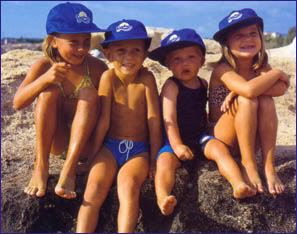
1.3 Not many kids – Since a child’s energy level escalates exponentially with each additional child in the room, it’s wise take no more than two children to travel with you at a time, or even just one. Especially if you are not so energetic or you are an old person, it is better to take only one child. It is more comfortable for you to take care the kid and together with him/her to enjoy nice journey.
1.4 Talk to children. It is said that children often benefit by being prepared for what they might encounter at the airport: crowds of people, the roar of airplanes taking off and landing, security procedures, and so on. Some families have found it useful to visit the airport prior to the planned date of departure. Tell them as clearly as you can about where they are going to go, what there are for them to enjoy and even what difficult things which they may encounter are. Let them understand that you are trying to make them a good journey and require them to make good “co-operation” during the trip. And you should let them know how long they will be living out of their houses because they are, however, used to living in theirs. Some experts say that it works well if they know in advance about the activities, maps and pictures of the destination. Because they have some knowledge of the place where they are going to arrive, they will be eager to take the journey and discover themselves the differences between what they have thought of through pictures and what they have seen in the trip. Then do not forget to ask children if they want to see the world with you. Finding ways for children to contribute their opinions in the vacation planning process can help to assure that arranged activities are appropriate for their interests, hobies and abilities.
1.5 Planning for sitting together on transport. Remember this when making reservations and purchasing tickets. After making flight reservations, confirm seating assignments to make sure that all of you and the kids can sit together. Getting your seat assignment in advance can help ensure families are seated together and that children and adults will be seated next to each other. If a flight is full of passengers and obtaining seat assignments in advance is not a possibility, advise the airline personnel at the airport. The airline may need to ask other passengers to exchange seats so that children are not seated apart from you and companies. It is wiser to make reservations one month before departure.
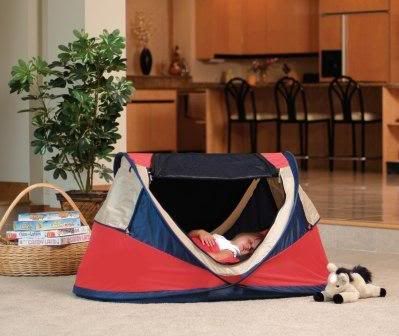
1.6 Pack a fun bag: Assemble a bag for each child containing stickers, paper and washable markers, figurines (that don't have a lot of pieces), magnetic games and puzzles, and a pillow. If you use these particular bags for trips only, they'll remain novel, and kids will look forward to the journey.
1.7 Pack bags: Pack your luggage well. Do not forget the things especially used for your children including necessary clothes, food (some snacks and socks), toys, feeding-bottle (for infant) and a first-aid kit where some day to day medicines to deal with minor mishaps. Let kids pack their own bags. Decide what type of clothing (preferably loose and comfortable), but allow them to choose their favorites and to pack a special toy. In a carry-on bag, pack some hard candies and gum, hand wipes, tissues, books, paper, markers in a small, tightly sealed plastic bag and perhaps a surprise toy for each child. Read more: What you need in your luggage before travel?
1.8 Update immunizations for the entire family. If traveling abroad, check with public health authorities for advisable additional vaccines. Depending on the destination and duration of stay, the following immunizations may be recommended (although some cannot be given to infants and young children):
» Hepatitis B vaccine » Typhoid vaccine
» Hepatitis A vaccine » Immune globulin
» Yellow Fever vaccine » Japanese B Encephalitis vaccine
» Meningococcal vaccine » Rabies vaccine
1.9 Flying with mobility aids:
Flying with mobility aids: Patience and preparation are the best tools for ensuring a safe and pleasant trip with children who use mobility equipment. When making reservations, inform airline representatives of the type of mobility aid a child or teenager uses. Ask about the airline's policies and procedures for handling mobility aids. Procedures vary from airline to airline, and it is important for parents to know how to prepare for the trip and what will typically happen to the equipment.
Flying with mobility aids: Foldable manual wheelchairs and other easy-to-store mobility aids can usually be stowed in the closets or other spaces on the aircraft. If the flight is crowded, however, these may be stored in the cargo hold, or belly, of the plane.
Flying with mobility aids: Flying with a power wheelchair or scooter presents unique challenges and requires extra consideration by both families and airlines. This discussion should begin when reservations are made. Know the dimensions of your child's chair; its height determines whether it can be transported in an upright position in the airplane's cargo hold or if it must be disassembled. It is also important to specify whether the chair uses wet-cell or gel batteries, as this will determine whether the batteries will be removed prior to shipment.
Flying with mobility aids: Families traveling with power chairs or scooters should try to give the airline 48 hours advance notice and arrive at the airport a minimum of one hour prior to the scheduled time of departure, so the ground crew will have time to properly prepare the equipment for shipment. Before leaving for the airport, label the chair with the type of battery it uses and attach a copy of the manufacturer's written instructions for disassembly and reassembly. These instructions are helpful to ground crews at both departure and destination points.
1.10 Familiarize yourself with the considerations that apply in respect of children when traveling, including the visa, passport, preferential measures and discounts on varied transport fares as well as the admission fees of the scenic spots.
1.11 Choose appropriate destinations that are suitable for both you and your children to visit. The informative, educational and instructive showplaces that are full of history, culture and art may widen your children's field of vision and enhance their knowledge. Try to find information or collect some material related to your destination and introduce them to your children, which may establish a good background for your kids to understand and enjoy the coming trip. Make a reasonable itinerary for your travel. Children lack the physical strength of adults, so your routes should not be very grueling or too long. Make your journey scheduling as flexible and relaxed as possible to ease pressure on your kids.
1.12 Choose the right time to travel. Children tend to be active and adventurous so it is vital that you are able to exercise the right level of control over them. Infants may cause much more trouble. So an appropriate time to set out is very important. Try to select a time when children may sleep in transit. This will ensure not only your peace of mind but also that of fellow travelers.
1.13 Make sure that your children are ready to travel if there are problems, follow the doctor's advice. If your trip is going to include physical activity, such as a fair amount of walking, practice before hand is recommended. Make sure that you have adequate health and travel insurances for your children. Before traveling with your children for an entire week or two, discover how you all travel together by taking a day trip or have them stay over for a weekend. If this short trip is more sour than sweet, maybe your children are not ready for a longer journey away from home. If that’s the case, don’t give up. Simply take more and more day trips until the group learns to have fun together.
1.14 Bring your baby-sitter or nursemaid as companions: If possible, bring your baby-sitter or nursemaid as companions to travel together with your family. They may be the very persons best suited to look after your children and so lessen any problems.
1.15 You’re the Guardian, So Be Prepared – One lesson travel agents teach over and over again is to always have proper identification and medical histories wherever you go, for emergencies enjoy being unpredictable. During the vacation, it is undoubted that you are totally responsible for the children, so make sure you have their proper identification, health insurance, contact information, recent photos and notarized authorization from their parents in case they need medical attention. All identifying documents for the children should comply with the latest federal requirements for passports and other entry/exit documents. Also, it’s your job to know their medications and dietary needs backwards and forwards. Finally, some countries do not allow entry of minors not accompanied by both parents unless the children have written, notarized permission from the absent parents. The rules vary from country to country, so consult your travel agent before your trip.
If you are old, read more: Tips for old travelers
2.At the airport
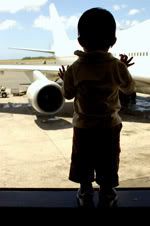
2.1 Allow plenty of time for check-in and also between connecting flights. Arriving early to board together prevents last minute delays and confusion, especially with the new security regulations. Be sure to have a safety plan in case anyone gets separated at the airport.
2.2 Review screening procedures with children before entering security checkpoints so they will not be frightened by the process. Every person, including children and babies, must undergo screening at security checkpoints. Also, all child-related equipment must go through the X-ray machine. To speed the process along, remove children from their strollers/infant carriers and collapse/fold the equipment so it may be examined or put through the machine. When going through metal detectors, with an infant, have one parent hold the baby and walk through the machine. Do not hand off the baby under the detector, or hand the baby to the screener to hold. Children who can walk should go through the metal detector independently. For older children, it is important to stress that the process should be taken seriously and that threats made even as a joke could result in law enforcement being summoned.
2.3 Flying with mobility aids
Flying with mobility aids When reaching the security check on the way to the gate, parents may request a private security check. A security officer will accompany the family to another room where he or she will inspect their luggage and the equipment. Many families find these private security checks less stressful than leaving bags waiting on the conveyor belt, with a line of impatient people forming behind, while a parent holds the child with a disability as the security officer inspects the wheelchair.
Flying with mobility aids At the gate, parents should receive a baggage claim tag for the equipment. Then they can wheel the child to the end of the jetway, where airline personnel will help transfer the child to an aisle chair.
Flying with mobility aids At that point, the airline's ground crew will begin preparing the chair for shipment. If the wheelchair uses a spillable wet-cell battery and cannot be stored in an upright position, Department of Transportation (DOT) rules require its removal and storage in an approved battery box. The acid-like substance in a wet-cell battery is considered hazardous material, and a spill could create a problem.
3. On Transport
3.1 Tell the attendants your special needs and care for your children. Make sure you have already booked the train/air tickets especially for your child at the required price. Contact the airport, airlines, or train stations as early as possible to tell the attendants your special needs and care for your children, so that they can make any relevant preparation in advance.
3.2 Help your kids with the seat belt. On the plane, train or other transport vehicles, help your kids with the seat belt (infant should be held and carried in your arms or fixed on a special seating). Do not ever let them wander in the cabin or compartment to prevent possible injury or discomfort to other passengers.
3.3 Try your best to keep your children quiet and make others pleasant. So in order to make them pay their attention and to make them not disturb others, let them read books, listen to stories, play their favorite simple toys and provide them with refreshment as appropriate. Bring bottled water to drink and lotion to apply to skin to rehydrate during the dry flight; gum, pacifiers and bottles to reduce air pressure on the children's ears; and a variety of toys in carry-on bags to keep the child's interest.
3.4 Bring a child/infant seat on board that meets current safety standards and is not more than 16 inches wide. It is recommended that children weighing less than 40 pounds be placed in child/infant seats.
3.5 The best coach seats to have when flying with small children are the first row in economy class. There's a lot of legroom when the kids get cranky from the long flight. If the front row seats are not available, place children away from the aisle, preferably between responsible adults. Also, remember to let them get up, stretch and walk around with you regularly during the flight, but do not allow children to walk around unsupervised.
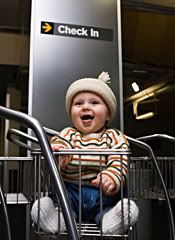
3.6 Mobility equipment: At your destination, the mobility equipment should be waiting by the time all passengers have disembarked. If disassembled for transport, it should be reassembled with the battery attached. All mobility aids must be returned in their original condition.
4. Traveling by car
Make it comfortable by bringing pillows and blankets. Stop frequently at rest stops to stretch and make use of restrooms. Play games like "I Spy.” Make sure the car is stocked with paper, pencils, plenty of engaging toys and tapes or CDs of their favorite songs or books. Most importantly, keep children involved in the vacation process. Save everything collected on vacation - brochures, napkins, ticket stubs - and have children paste them into a scrapbook.
Plan ahead with the rental company to make sure they offer car seats and installation. If not, you'll have to bring your own in addition to a collapsible stroller. If nothing else, a simple call to the rental car company may save you the hassle of bringing along one extra piece of equipment.
5. Lodging
5.1 Contact the hotel in advance to ascertain the general condition of the guest room. Make sure all the facilities are accessible for your children's use. If necessary, ask the hotel reception to arrange for special needs such as an extra bed or crib as well as the availability of child minding services.
5.2 Hide away any small gadgets, or dangerous items that may harm your children. Be conversant with the hotel emergence procedures in the event of fire, etc.
Put safety first by avoiding a myriad of possible accidents. Bring outlet protectors and make a sweep of balconies and bathrooms for any potential dangers. Hide away small objects, accessible medications and cleaners children could get their hands on. Familiarize yourself with the hotel’s fire and emergency evacuation routes and procedures.
6. Eating
When traveling, especially when traveling abroad there will be a change in diet. Children may not like the dishes on offer so you should consider their dietary needs with care. It is wise to ensure that they avoid unwashed fruit and the like as well as uncooked food and that you take all reasonable care to avoid stomach upsets.
7. Traveling
7.1 Try to avoid visiting the more dangerous scenic spots as mountain and cliff footpaths, water in all its forms and areas such as jungle all present hazards. Pay much attention to your children's movements. Keep them under your control and in view at all times.
7.2 Prepare some amusing games or small activities which may add some interest during trips and thus keep your children occupied.
7.3 Avoid getting lost. Do not let them go out alone. Since tourist destinations are usually unfamiliar to you, accompany your children at all times as this is much safer. It is recommended that your children carry a note of your name, telephone and address in their pocket in case they do get separated from you or become lost.
7.4 Break up the trip with frequent stops Playgrounds, indoor fun centers, and family restaurants are good bets. AT&T Wireless even offers new M-Mode cell phone services that let customers access the locations of nearby fast-food restaurants, movie schedules, restaurant reviews, directions and even weather reports.
7.5 Make a memory box Bring an empty shoebox along to store items you'll collect along the way, such as seashells, rocks, funny postcards, and marked-up road maps. When you get home, label the box with the trip destination and date, and you'll have a great souvenir of your time together. This stimulate kids a lot and help them like the travel.
7.6 Phone Home – An effective way to alleviate homesickness is to make periodic phone calls to the other members at home (or to their parents if you are not their parents) and let the kids gush about the day’s exciting adventures. The others (or their parents) will feel better knowing their children are in good hands, and you’ll feel better listening to the kids rave about the activities you planned.
7.7 You Need Downtime, Too – Many places provide supervised activities for kids. If the resort or cruise offers these, take them up on that offer and get some much-needed rest.
7.8 Plan B? Call Your Agent When life serves you lemons, your travel agent has a lemon squeezer, clean glasses and a bucket of ice. Many unforeseen factors—an illness, hurricanes, unscheduled closings—can dampen a vacation, no matter how thoroughly it was planned. When one of these occasions arises, stay positive, pull your travel agent’s card out of your purse and give her a call. A travel agent has Plans B-through-Z at her fingertips.
8. Some extra precautions
8.1 If your vacation includes a trip to a pool, ocean, water park or any other place involving water, the number one rule is to never let children venture off alone. Even if they know how to swim, children should wear a life jacket at all times. Also, it is important to know what is in the water, such as chemicals or jellyfish. Very cold temperatures, currents, and sudden drop-offs are all things to avoid, especially with children.
8.2 Always bring a hat with a wide brim and sunscreen of at least 30 SPF to shield children’s skin from the sun's harmful rays. Sun poisoning can ruin any vacation.
8.3 It is important to bring along needed medications. Diarrhea treatments (although these should not be given to very young children), pain relievers, insect repellants, antihistamines and adhesive bandages are good staples. Consult your doctor about “over the counter” remedies before using them. Bringing a doctor's number, even if traveling to a foreign country, is a good idea, as well.
8.4 To prevent diseases spread by drinking contaminated water, use only bottled or boiled water to mix formula and juices, or simply go with pre-mixed liquid formula whenever possible, if an infant is not being nursed.
8.5 Create a Multi-Generational Itinerary – Too often seniors plan activities to solely please the children, running themselves ragged to keep the trip in a high gear of constant fun. But if you become unhappy, the kids will soon follow. A travel agent will help you craft an itinerary that appeals to both generations, paying special attention to natural attractions, like mountains and canyons, and historical sites, like lost temples and medieval castles.
9. MOST IMPORTANTLY...
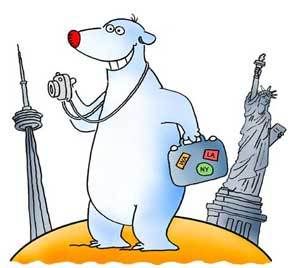
Stay in a good sense of humor during the trip to give your children a vacation to remember in spite of any unforeseen obstacles.
Have a nice trip with kids.
Read more: